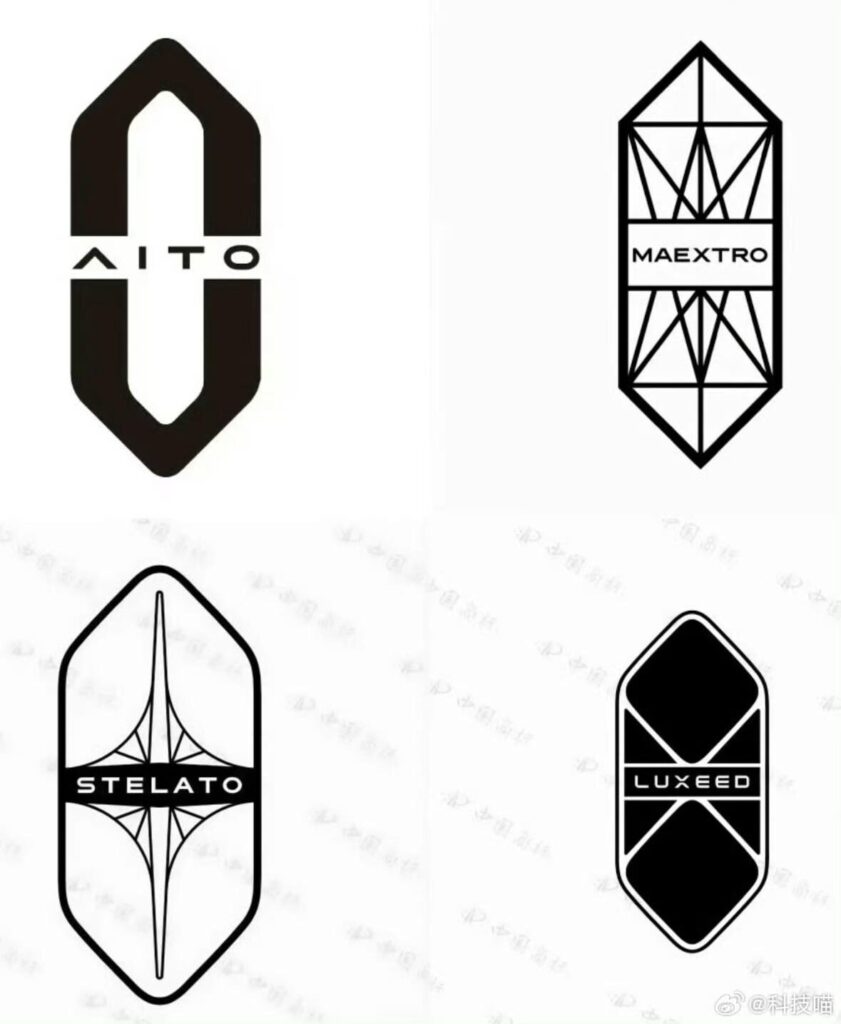Huawei’s ‘Five Fingers’: Why They Couldn’t Beat Xiaomi’s ‘One Fist’

Why did it take nearly two years for a car from Huawei’s ecosystem, the Luxeed, to get its own logo? This isn’t just a branding delay; it’s a symptom of a much deeper strategic struggle.
I’ve previously described Huawei’s multi-brand EV strategy (AITO, Luxeed, Stelato) as ‘Five Fingers,’ contrasting it with Xiaomi’s powerful ‘One Fist’ approach with the SU7. The recent, belated logo release perfectly illustrates why Huawei’s diffuse strategy has struggled to match the impact of Xiaomi’s singular punch.
A Grand Dream Blocked by Two Giant Walls
At the heart of this chaos was a simple, powerful vision from Richard Yu, the head of Huawei’s auto business. His initial plan: launch a car brand named ‘Huawei AITO,’ directly leveraging the parent company’s immense brand power.
However, this dream collided with two immovable walls:
- The Huawei Board: Adhering to the strict principle of “Huawei does not build cars,” the board vetoed the plan. ‘Huawei AITO’ logos were stripped from showrooms overnight.
- Chinese Government Regulations: Yu’s Plan B was to unify all partners under a single HIMA (Huawei Intelligent Mobility Alliance) brand. This too was blocked by a law requiring the actual manufacturer’s name on the vehicle. Since Huawei is only the tech supplier, not the manufacturer, its name was barred.
The result was a forced compromise: Huawei had to transfer the trademarks like AITO and Luxeed to its manufacturing partners, Seres and Chery. The ‘Five Fingers’ strategy wasn’t a choice; it was a necessity born from constraint.
Risk Diversification vs. Brand Power: The Other Side of the Coin
“If our partners could just use the Huawei logo, they could just lie back and relax!” Richard Yu once exclaimed, venting his frustration at Xiaomi’s success. He has a point. Xiaomi’s single-brand strategy is incredibly efficient.
But, we need to look at the other side of the coin. As the video analysis pointed out, this ‘One Fist’ carries immense risk.
- Xiaomi’s Model (High-Risk, High-Reward): A single accident or flaw can damage the entire Xiaomi brand and its CEO, Lei Jun, who is the face of the car. All risk is concentrated.
- Huawei’s Model (The “Firewall”): This forced strategy has an unintended benefit: risk diversification. A problem with an AITO car (made by Seres) doesn’t directly tarnish the Luxeed brand (made by Chery) or, crucially, the core Huawei brand. It acts as a corporate firewall.
Conclusion: A Forced Choice, But Perhaps the Best Defense?
Huawei’s fragmented brand strategy wasn’t by design. It was a compromise cornered by internal policy and external regulation. Yet, paradoxically, this may have become its most effective defensive strategy in an unpredictable market.
To build cars or not to build cars? Who can say which path is correct? The battle between Xiaomi’s powerful fist and Huawei’s flexible fingers will be a fascinating subplot in the global tech and EV race.